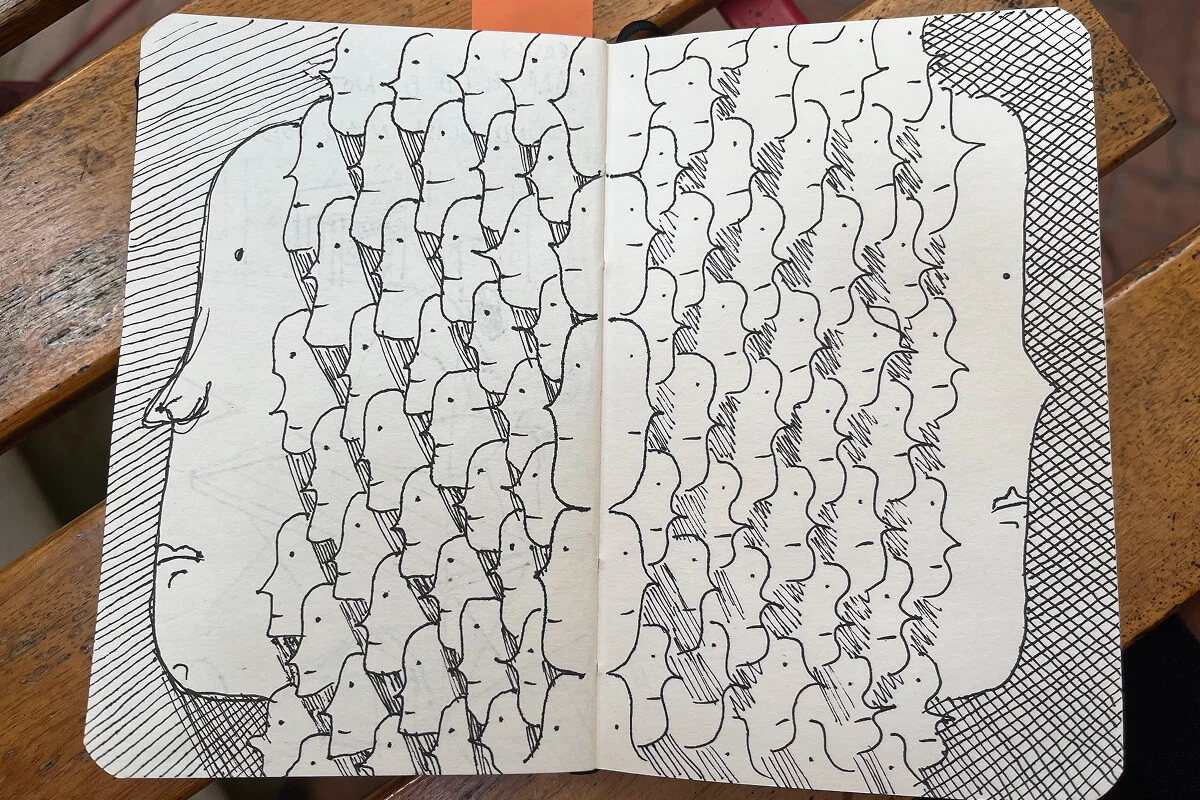Every journey begins in the Ordinary World—not with bold decisions or big transformations, but with a quiet sense that something isn’t quite working.

Welcome to the first deep dive in the Hero’s Journey Framework series!
Stage 1 is about meeting your audience exactly where they are, before they’re ready to change:
- A growing frustration that their usual routines or strategies no longer give them the clarity or momentum they used to.
- A low hum of stress, tension, or burnout they’ve learned to live with — but never fully addressed.
- An uneasy feeling in the background — like something is off, misaligned, or missing — even if they can’t articulate what it is.
Your job here isn’t to fix or convince. It’s to reflect. To say, “I see you. You’re not alone.”
This is where your message must begin. Not with solutions, but empathy.
What is the Ordinary World?
In storytelling, the Ordinary World is the hero’s “before” picture — the part of their life that feels familiar, habitual, and often invisible.
A freelance designer who keeps saying yes to projects that drain them because they're convinced it’s the only way to stay afloat.
Waking up each morning with a full client roster, still feeling empty.
That quiet tension between what they’re doing and what they actually want is their Ordinary World.
This is the first emotional mirror you hold up for your audience. A moment where they recognize themselves in your words.
It’s not about pointing out flaws or dramatizing struggle. It’s about gently reflecting the inner tension they’ve been carrying — the sense of misalignment, fatigue, or longing they may not have fully named.
When your audience sees their emotional truth mirrored back without judgment, a deeper connection forms. That’s the work of this stage.
It’s not just “Here’s your pain." It’s “Here’s your reality”.
This is where connection is built.
Why It Matters in Your Message
If you skip this stage in your copy, your audience won’t feel grounded.
They won’t trust you understand them.
And no matter how good your offer is, they’ll scroll past it — because the story didn’t start where they are.
The Ordinary World earns attention by reflecting lived experience.
It’s how you say, “You’re not alone.”
How to Use It in Your Personal Brand
Places to use this stage:
- Website hero sections
Open your homepage with an emotional mirror, not a pitch. - Sales pages
Before you sell the solution, name the story they’re living. - Lead magnet intros
Frame your resource as a response to what they’re actually navigating. - Emails and captions
Start with resonance, not CTA. Meet them in their moment.
What to write:
- The stuck point or frustration they haven’t admitted out loud.
- The inner disconnect between what they’re doing and how they feel.
- What they’ve been tolerating because they’re unsure what else to do.
Prompts:
- “What are your people doing right now that looks successful but feels hollow?”
- “What story are they telling themselves to justify staying stuck?”
- “What language do they use when they describe what’s ‘not working’ — and how can you echo that back?”
Example lines:
- “You’re juggling everything and still feel stuck.”
- “You’ve built something real, but it no longer feels aligned.”
- “You’re showing up — but it’s not landing.”
3 Practical Applications:
Instagram Caption
Write a short, grounded reflection that starts with: “You’ve done everything ‘right’ — and still feel stuck.”
Why it works: Stops the scroll with resonance instead of hype.
How to apply: Use plain, emotional language. No selling. Just reflect back a common truth.
Sales Page Intro
Lead with this: “You’ve launched, you’ve posted, you’ve followed the frameworks. But something’s missing.”
Why it works: It disarms resistance and builds trust before you introduce your offer.
How to apply: Use their language. Speak to what they’re tolerating.
Newsletter Opening
Start your email with: “Here’s what I hear from creators like you…” and then describe their ordinary world.
Why it works: It creates a moment of connection before delivering insight or promotion.
How to apply: Pull phrases from actual DMs, comments, or feedback you’ve received.
Questions to Reflect On
- What does your audience’s “ordinary world” look like?
- What does it feel like emotionally?
- What are they believing, tolerating, or pretending is okay?
- How can you reflect that back with respect?
Final Thought
Before anyone buys from you, they need to feel seen by you.
The Ordinary World is where that begins. It’s not about selling. It’s about grounding. Listening. Naming the truth gently.
Start there — and the rest of the journey opens naturally.
The Ordinary World may seem quiet, even uneventful — but it’s where trust begins. When you reflect your audience’s current reality with honesty and empathy, you give them the safety to consider what’s next. You show them they’re not broken, just at a beginning. This is the foundation. Everything else in the journey builds from here.
Next up: Stage 2 — The Call to Adventure
Explore how to awaken desire and stir possibility without relying on pain points alone.




